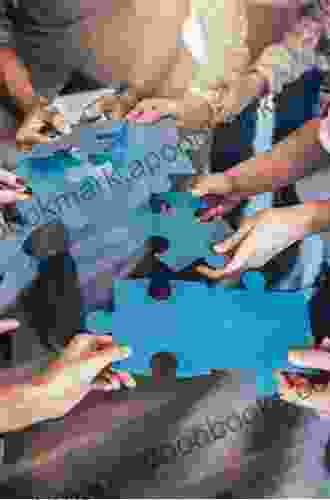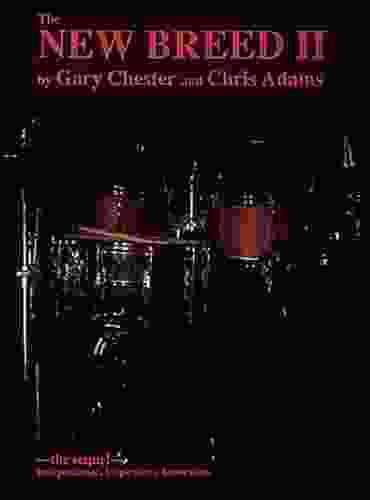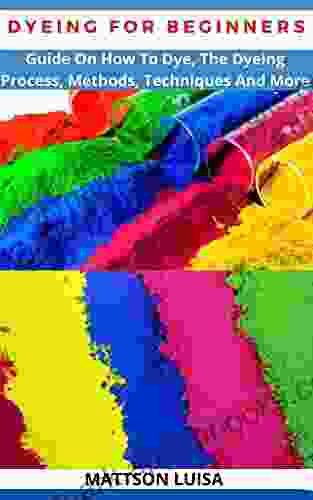The Ultimate Guide to Dyeing: Techniques, Methods, and More

Dyeing is an ancient art form that has been used for centuries to add color and beauty to textiles. From the vibrant hues of natural dyes to the bold colors of synthetic dyes, dyeing can transform ordinary fabrics into works of art.
4.6 out of 5
| Language | : | English |
| File size | : | 459 KB |
| Text-to-Speech | : | Enabled |
| Screen Reader | : | Supported |
| Enhanced typesetting | : | Enabled |
| Print length | : | 17 pages |
| Lending | : | Enabled |
In this comprehensive guide, we will explore everything you need to know about dyeing, including the different types of dyeing processes, techniques, and materials. Whether you are a beginner or an experienced dyer, you will find valuable information and inspiration within these pages.
Types of Dyeing Processes
There are two main types of dyeing processes: natural dyeing and synthetic dyeing.
Natural Dyeing
Natural dyeing uses dyes derived from plants, animals, or minerals. These dyes are typically more muted in color than synthetic dyes, but they offer a unique beauty and depth of color. Some common natural dyes include:
Synthetic Dyeing
Synthetic dyeing uses dyes that are created in a laboratory. These dyes are typically more vibrant and colorfast than natural dyes, and they offer a wider range of colors. Some common synthetic dyes include:
Dyeing Techniques
There are many different dyeing techniques that can be used to create a variety of effects. Some of the most common techniques include:
Materials for Dyeing
In addition to dyes, you will need a few other materials to dye fabric. These materials include:
How to Dye Fabric
The process of dyeing fabric is relatively simple. However, there are a few steps that you should follow to ensure that you get the best results.
- Prepare your fabric. Before you dye fabric, you need to prepare it by washing it and removing any impurities. This will help the dye to adhere to the fabric more evenly.
- Set up your dye bath. To set up your dye bath, you will need to mix the dye with water according to the manufacturer's instructions. You may also need to add mordants or fixatives to the dye bath.
- Immerse the fabric in the dye bath. Once the dye bath is ready, you can immerse the fabric in it. Use a spoon or stick to stir the fabric around so that it evenly absorbs the dye.
- Heat the dye bath. Most dyes require heat to set. Gradually heat the dye bath to the temperature specified by the manufacturer. Maintain the temperature for the amount of time specified by the manufacturer.
- Rinse the fabric. After the fabric has been dyed, rinse it thoroughly with cold water until the water runs clear. This will remove any excess dye.
- Dry the fabric. Once the fabric has been rinsed, dry it completely. You can air dry the fabric or tumble dry it on a low heat setting.
Troubleshooting Dyeing Problems
If you encounter any problems while dyeing fabric, there are a few things you can try to troubleshoot the problem.
Dyeing is a fun and rewarding way to add color and creativity to your wardrobe and home décor. With the right techniques and materials, you can create beautiful and unique fabrics that will be cherished for years to come.
We hope this guide has provided you with all the information you need to get started with dyeing. Be sure to experiment with different techniques and dyes to create your own unique works of art.
4.6 out of 5
| Language | : | English |
| File size | : | 459 KB |
| Text-to-Speech | : | Enabled |
| Screen Reader | : | Supported |
| Enhanced typesetting | : | Enabled |
| Print length | : | 17 pages |
| Lending | : | Enabled |
Do you want to contribute by writing guest posts on this blog?
Please contact us and send us a resume of previous articles that you have written.
 Book
Book Novel
Novel Page
Page Chapter
Chapter Text
Text Story
Story Genre
Genre Reader
Reader Library
Library Paperback
Paperback E-book
E-book Magazine
Magazine Newspaper
Newspaper Paragraph
Paragraph Sentence
Sentence Bookmark
Bookmark Shelf
Shelf Glossary
Glossary Bibliography
Bibliography Foreword
Foreword Preface
Preface Synopsis
Synopsis Annotation
Annotation Footnote
Footnote Manuscript
Manuscript Scroll
Scroll Codex
Codex Tome
Tome Bestseller
Bestseller Classics
Classics Library card
Library card Narrative
Narrative Biography
Biography Autobiography
Autobiography Memoir
Memoir Reference
Reference Encyclopedia
Encyclopedia Richard Jeanty
Richard Jeanty Dr Widad Akreyi
Dr Widad Akreyi Earl Rogers
Earl Rogers Nathan Myhrvold
Nathan Myhrvold Michele Haiken
Michele Haiken Mike Steeden
Mike Steeden S Kay Gandy
S Kay Gandy Ehab Abo Elazm
Ehab Abo Elazm Youna Kim
Youna Kim Ed Okonowicz
Ed Okonowicz Edoardo Albert
Edoardo Albert Pashang Salehi
Pashang Salehi Robert J Smith
Robert J Smith Joanna Cazden
Joanna Cazden Jack Heart
Jack Heart Dylan Newton
Dylan Newton L Joseph Hebert Jr
L Joseph Hebert Jr Helen Raleigh
Helen Raleigh Eavan Boland
Eavan Boland Gayathri Venkatachalapathi
Gayathri Venkatachalapathi
Light bulbAdvertise smarter! Our strategic ad space ensures maximum exposure. Reserve your spot today!

 Stephen KingUnlock the Power of Teamwork: Exploring 'Games and Activities for Building...
Stephen KingUnlock the Power of Teamwork: Exploring 'Games and Activities for Building...
 David BaldacciRotary Valve Strokes 1959 To 2008: The Ultimate Enthusiast Restoration Manual
David BaldacciRotary Valve Strokes 1959 To 2008: The Ultimate Enthusiast Restoration Manual Corey GreenFollow ·11.9k
Corey GreenFollow ·11.9k Zadie SmithFollow ·12.3k
Zadie SmithFollow ·12.3k Robert ReedFollow ·9.5k
Robert ReedFollow ·9.5k Raymond ParkerFollow ·12.1k
Raymond ParkerFollow ·12.1k W.B. YeatsFollow ·15.8k
W.B. YeatsFollow ·15.8k Ernesto SabatoFollow ·13.6k
Ernesto SabatoFollow ·13.6k Neil GaimanFollow ·18.9k
Neil GaimanFollow ·18.9k Everett BellFollow ·5.6k
Everett BellFollow ·5.6k

 Eugene Powell
Eugene PowellFat Cat Stories: Level At Word Family - A Purrfect Start...
Introducing the 'At'...

 William Powell
William PowellUnveiling the Treasures of Russian Poetry: The Cambridge...
Immerse yourself in the...

 Roberto Bolaño
Roberto BolañoUnveiling the Treasures of Beowulf: A Guided Tour with...
: Delving into the...

 Foster Hayes
Foster HayesTransport, Climate Change and the City: Tackling Urban...
Transport is a major...

 Calvin Fisher
Calvin FisherHow To Make It In The Music Industry: The Ultimate Guide...
Are you an aspiring musician with...

 Rick Nelson
Rick NelsonUnveiling the Enigmatic World of Gary Chester's "The New...
Step into a World...
4.6 out of 5
| Language | : | English |
| File size | : | 459 KB |
| Text-to-Speech | : | Enabled |
| Screen Reader | : | Supported |
| Enhanced typesetting | : | Enabled |
| Print length | : | 17 pages |
| Lending | : | Enabled |








